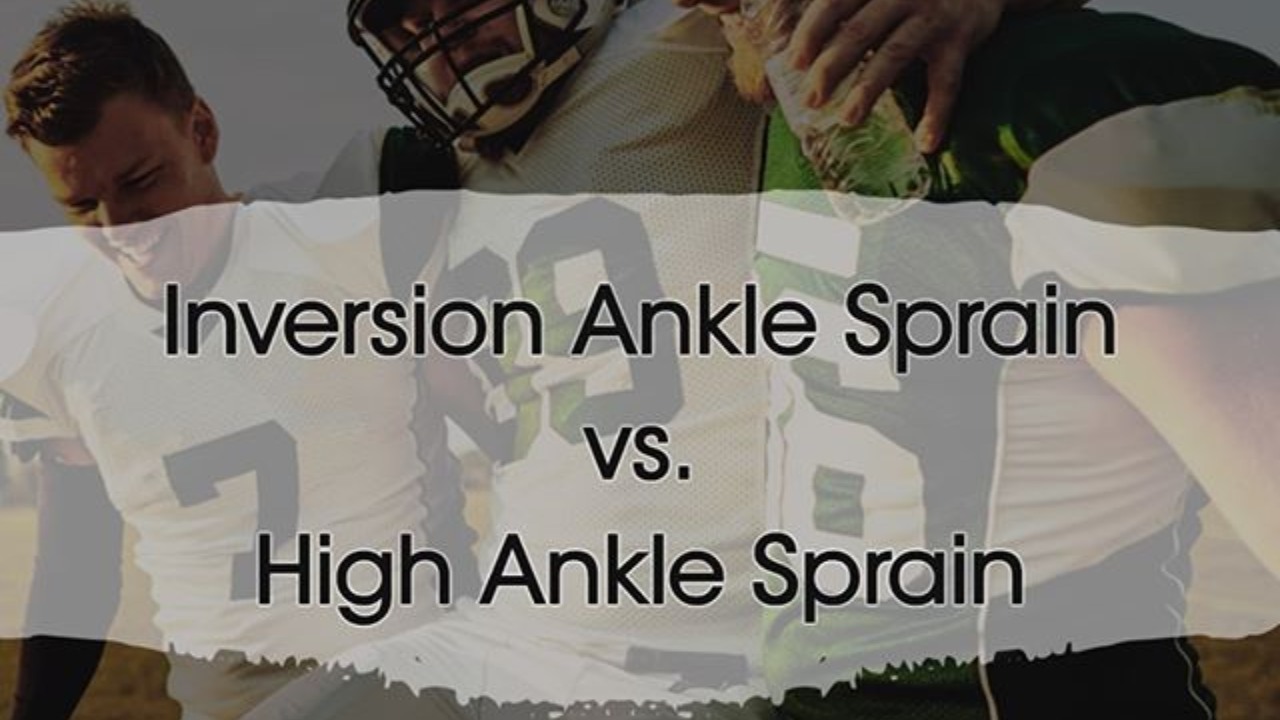The Two Most Common Types of Ankle Sprains

With professional sports back in full swing, a common injury that is often seen on the field and on the court is the dreaded ankle sprain. The two most common types of ankle sprain typically witnessed during sporting events are the inversion (inward) ankle sprain and the high ankle sprain.
As a physical therapist, I am often asked what the difference is between an inversion (inward) ankle sprain and a high ankle sprain. For the most part, many people who I have talked to believe that they are the same injury, with the high ankle sprain being a more severe form of the injury. However, the truth is, these are two very different types of ankle injuries with two very different causes.
Inversion Ankle Sprain:
This injury occurs when the foot is rolled inward at a high velocity, towards the midline of the body, resulting in a sprain, or stretching/tearing, of the ligaments on the outer aspect of the ankle. This can occur as a contact injury, such as stepping on someone else’s foot, or a non-contact injury, such as stepping wrong and tripping over your own foot. This is the most common type of ankle sprain and is typically seen in ~80% of all ankle sprain injuries.
High Ankle Sprain:
Contrary to popular belief, the high ankle sprain is not simply a more severe form of the inversion ankle sprain. Rather, this injury occurs when the foot is rolled outward, into eversion, at a high velocity, towards the outer aspect of the ankle. This usually occurs when someone or something falls on the outer aspect of your leg, causing your foot to roll outward. This can result in a number of different sprains to different structures in the ankle, the most common being the ligaments that sit above, or higher to, the ankle. This is why it is called a high ankle sprain. When the foot is rolled outward, it places increased stress on the ligaments that hold the two bones of the lower leg together (tibia and fibula), causing pain typically above the level of the ankle. This injury can also cause damage to the ligaments on the inner aspect of the ankle. However, this is typically uncommon as these ligament structures are a lot thicker and stronger compared to the other ligaments in the ankle, which is why the ligaments above the ankle are usually the first to get injured.